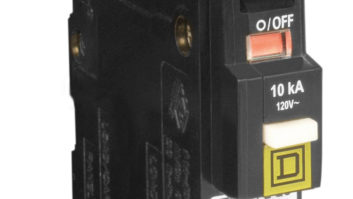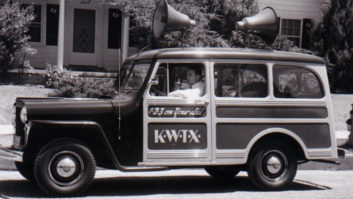Selecting a new transmitter
Dec 1, 2001 12:00 PM, By Hal Kneller, CPBE CBNT
Solid-state technology has taken over the major AM broadcast transmitter manufacturers, and up to 40kW of solid-state power is available in FM. When making the decision to buy a new transmitter, there are several factors to consider. We will look at some of these choices and offer suggestions on how to weigh each of them in your decision.
Redundancy and soft failure modes are the solid-state rule. Remaining on the air despite module failures is the benefit when common points of failure are eliminated. Individual redundancies and features vary by company, so buyer diligence is required.
When shopping for an AM transmitter at any power level, the only choices from the major U.S. manufacturers are solid-state amplifiers. Choosing between solid-state versus tube for FM based on price hovers around the 3kW to 5kW level. For a 10kW solid-state FM transmitter, the added premium over the cost of a tube transmitter is small enough to justify the purchase unless the transmitter is destined for secondary or back-up use. Some manufacturers are making attempts to produce a solid-state line at tube prices, and some have dropped tube transmitters below 10kW. Those building a 20kW solid-state FM transmitter, such as Nautel’s Q-20, have a price advantage over others who combine two 10kW cabinets. Pricing at 10kW and below appears reasonably competitive between manufacturers. Still, single-tube transmitters at higher power levels of 20kW and up offer a significantly lower acquisition price.
When contemplating a new transmitter purchase, one must examine time, expense, ease of maintenance, overall reliability and possibly IBOC-conversion compatibility. The cost of ownership should be considered in the purchase decision, since a transmitter’s life expectancy is typically 10 to15 years. There are direct savings in a reduced electrical bill (particularly in AM) and the cost savings in tubes, in addition to the claims of reduced maintenance. For AM transmitters, an immediate breakeven occurs, since there is no real purchase price difference, and electrical savings over older transmitters can be substantial at higher power stations. FM power savings range from negative to marginal, so all cost recovery depends on elimination of tubes and reduced maintenance. The real payback depends on the value of lost airtime and reduced maintenance costs. Remote or difficult-to-access transmitter locations, and major-market installations will benefit from the redundancy and reliability of the newer solid-state units. In smaller markets, some stations may be comfortable not having a backup if a modern, solid-state transmitter is in use. New features available in current solid-state transmitters include automatic switching of dual IPAs and dual exciters, switchless automatic combiners, cooling fans on each module or redundant fans, multiple power supplies and dual controllers. All these factors contribute to significant reductions in lost air time from a transmitter failure.
Better specs
Overall, solid-state performance has allowed AM and FM analog transmission systems to reach the operating capability limits of the medium. How much better do newer FM solid-state transmitters perform? Several manufacturers report exciter specifications that are essentially passed through the solid-state power amplifier, whereas some degradation of performance is noted when using tube final amplifiers, particularly in AM and FM noise performance. In solid-state use, the FM exciter is the key to high system performance. In current-generation AM transmitters, receivers do not measure up to the quality that can be transmitted (�0.5dB 50Hz-10kHz, <1% THD and IMD with -60dB noise).
Large clusters of commonly owned stations have appeared in markets with fewer engineers to maintain them, making transmitter maintenance key. Historically, tube transmitters suffered from poor designs such as low-headroom tube-driver sections, self-oscillating tetrodes, and tube failures. Modern single-tube transmitter designs incorporating solid-state drivers have eliminated 99% of these problems. In general, repairs and troubleshooting are easier with a solid-state unit. Manufacturers have greatly simplified identifying and replacing a failed subassembly. While modern tube transmitters outperform their predecessors, a failure still typically results in lost air time. However, a solid-state transmitter will stay on the air at some power level, even if devices fail.
Newer feature sets
During a visit to the Harris facility in Quincy, IL, I noticed a Z10CD transmitter on final test. It had a custom panel that permitted any one of five or six frequencies to be selected. A group operator had purchased this unit (to be connected to a wideband antenna) to function as a multistation backup for a market. This would not have been possible with tubes and tuned circuits. This approach enhances reliability where it is needed most.
The most important maintenance item for a solid-state transmitter is to keep it clean. New transmitters should be installed in clean room environments as well. Maintenance-cost savings are quickly realized compared to a tube transmitter, which, in addition to more frequent cleaning because of the high voltages, includes such work as filament adjustment and tuning touch-ups to get the most life from the tube. Tube replacement is another cost issue, along with tube sockets and associated components.
By adding the number of solid-state (both AM and FM) transmitters in the field, we may be approaching 10,000 units worldwide, indicating that the tube transmitter’s days are numbered, certainly at the 10kW and below power level for FM. As manufacturing costs continue to decrease and new, higher power devices are brought to market, the premium to manufacture solid-state transmitters will continue to be mitigated or even eliminated.
A look at the past
Successful solid-state AM broadcast transmitters were introduced in 1975 when Harris installed an MW-1 (1kW series-modulated using bipolar devices) at KXEO in Mexico, MO. In 1982 Nautel introduced the pulse-modulated AMFET series with up to 10kW of solid-state power, offering the first higher power AM units (using MOSFETS). Harris followed that with the SX series in 1983 with a polyphase PDM design offering 1kW to 5kW. Today’s Gates third-generation series is similar. Even first-generation AM solid-state transmitters claimed an operational power cost advantage, eliminated tube cost and had excellent audio performance. Harris and Nautel introduced 50kW solid-state AM transmitters by the mid 1980s. By then, Broadcast Electronics, Continental and several others were selling solid-state AM transmitters (10kW and below) for the U.S. market. Continental has dropped its AM and FM solid-state product line for 10kW and higher single-tube FM transmitters.
Higher power solid-state FM transmitters (above a few hundred watts) were much slower to appear due to the lack of suitable devices for VHF frequencies. It was in 1991 or 1992 that Nautel introduced the FM7 (using MOSFETs), which eventually migrated to the 10kW power level at which FM solid-state transmitters gained significant market acceptance. QEI also sold Quantum solid-state transmitters during the mid 90’s. Harris introduced the Platinum line soon after and unveiled the Z line in 1996.
Digital FM exciters have also taken firm hold; several thousand digital exciters have been shipped from various manufacturers. The digital exciters feature composite analog or AES-3 digital inputs, along with an analog SCA input.
Here to stay
Solid-state AM and FM radio broadcast transmitter technology is relatively mature, yet some engineers are still concerned about lightning damage to solid-state devices. Anyone who thinks solid-state is more vulnerable to lightning has not been paying attention. Many communication industry installations use only solid-state transmitters and base stations with big antennas. Because the minute thermal mass of a transistor junction is less forgiving than a large tube filament, a greater adherence to good engineering practice and planned dissipation paths is required. All transmitters, AM or FM, tube or solid-state, should be installed using good engineering practices. This is especially true in the areas of grounding and AC line protection. If properly installed, solid-state transmitters can survive lightning as well as a tube rig.
Manufacturers can do a better job communicating proper grounding and installation techniques and surge suppression in their instruction manuals. Nautel provides an excellent Site Preparation Guide that explains and demonstrates proper methods for installing any transmitter.
Another issue we hear less about today is the sensitivity of modern AM transmitters to improper loads. Some transmitters no longer even have front-panel tuning or loading controls.
Most current solid-state FM products can be linearized from the factory or in the field for IBOC FM common amplification mode. AM solid-state pulse modulated products should be easily modified, if not already suitable. Several AM transmitter manufacturers are now shipping �IBOC-ready� units.
Thanks to those who provided information for this article: Daryl Buechting, senior manager, radio product management and planning, Harris; Jorgen B. Jensen, manager, sales and marketing, Nautel Limited; Tim Bealor, director, RF systems, Broadcast Electronics; Ernie Belanger, sales and marketing manager, Armstrong Transmitters; and Ed Etschman, vice president, QEI.
Hal Kneller, CPBE CBNT is president and chief engineer of Heartland Broadcasting Corp, WZZS, WZTK, WZSP Zolfo Springs, FL, and director of radio engineering at Florida Gulf Coast University, Ft. Myers, FL, WGCU FM and WMKO.







